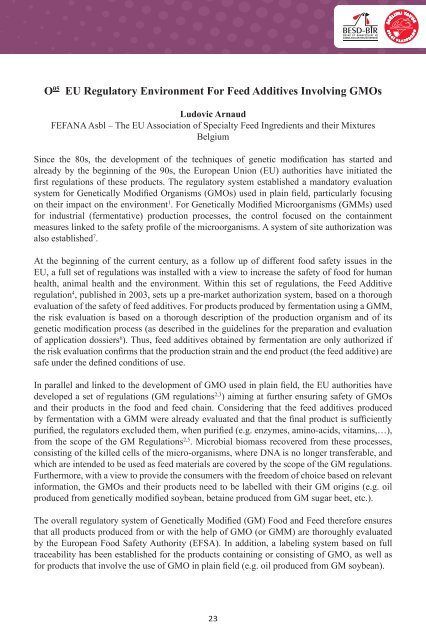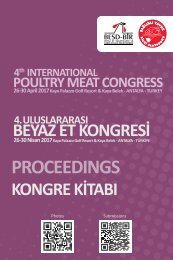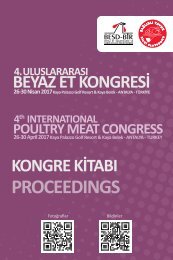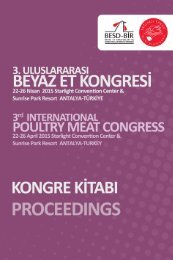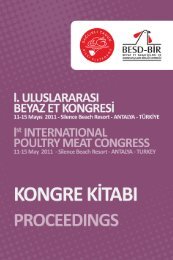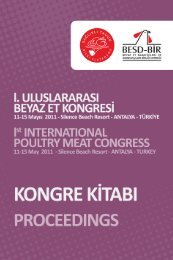3rd International Poultry Meat Congress
Proceedings
Proceedings
Create successful ePaper yourself
Turn your PDF publications into a flip-book with our unique Google optimized e-Paper software.
O 05 EU Regulatory Environment For Feed Additives Involving GMOs<br />
Ludovic Arnaud<br />
FEFANA Asbl – The EU Association of Specialty Feed Ingredients and their Mixtures<br />
Belgium<br />
Since the 80s, the development of the techniques of genetic modification has started and<br />
already by the beginning of the 90s, the European Union (EU) authorities have initiated the<br />
first regulations of these products. The regulatory system established a mandatory evaluation<br />
system for Genetically Modified Organisms (GMOs) used in plain field, particularly focusing<br />
on their impact on the environment 1 . For Genetically Modified Microorganisms (GMMs) used<br />
for industrial (fermentative) production processes, the control focused on the containment<br />
measures linked to the safety profile of the microorganisms. A system of site authorization was<br />
also established 7 .<br />
At the beginning of the current century, as a follow up of different food safety issues in the<br />
EU, a full set of regulations was installed with a view to increase the safety of food for human<br />
health, animal health and the environment. Within this set of regulations, the Feed Additive<br />
regulation 4 , published in 2003, sets up a pre-market authorization system, based on a thorough<br />
evaluation of the safety of feed additives. For products produced by fermentation using a GMM,<br />
the risk evaluation is based on a thorough description of the production organism and of its<br />
genetic modification process (as described in the guidelines for the preparation and evaluation<br />
of application dossiers 6 ). Thus, feed additives obtained by fermentation are only authorized if<br />
the risk evaluation confirms that the production strain and the end product (the feed additive) are<br />
safe under the defined conditions of use.<br />
In parallel and linked to the development of GMO used in plain field, the EU authorities have<br />
developed a set of regulations (GM regulations 2,3 ) aiming at further ensuring safety of GMOs<br />
and their products in the food and feed chain. Considering that the feed additives produced<br />
by fermentation with a GMM were already evaluated and that the final product is sufficiently<br />
purified, the regulators excluded them, when purified (e.g. enzymes, amino-acids, vitamins,…),<br />
from the scope of the GM Regulations 2,5 . Microbial biomass recovered from these processes,<br />
consisting of the killed cells of the micro-organisms, where DNA is no longer transferable, and<br />
which are intended to be used as feed materials are covered by the scope of the GM regulations.<br />
Furthermore, with a view to provide the consumers with the freedom of choice based on relevant<br />
information, the GMOs and their products need to be labelled with their GM origins (e.g. oil<br />
produced from genetically modified soybean, betaine produced from GM sugar beet, etc.).<br />
The overall regulatory system of Genetically Modified (GM) Food and Feed therefore ensures<br />
that all products produced from or with the help of GMO (or GMM) are thoroughly evaluated<br />
by the European Food Safety Authority (EFSA). In addition, a labeling system based on full<br />
traceability has been established for the products containing or consisting of GMO, as well as<br />
for products that involve the use of GMO in plain field (e.g. oil produced from GM soybean).<br />
23


